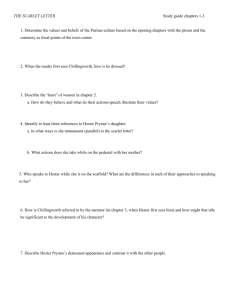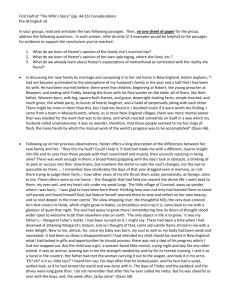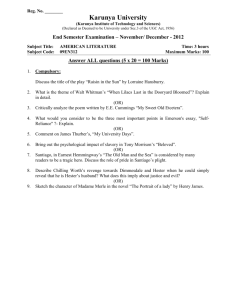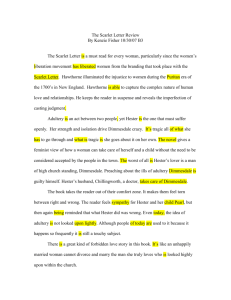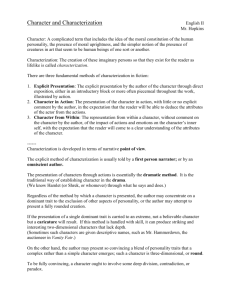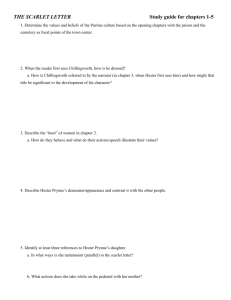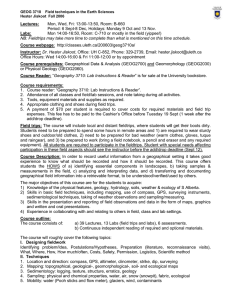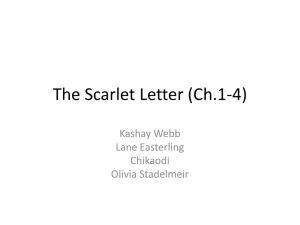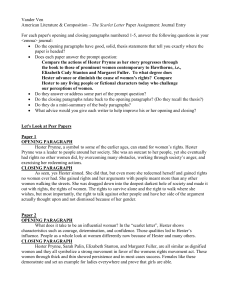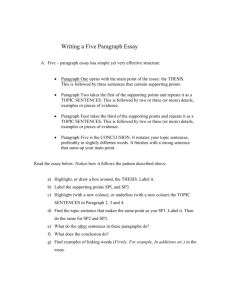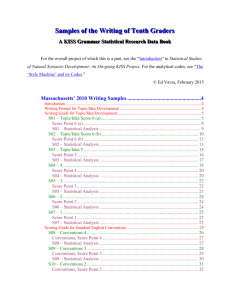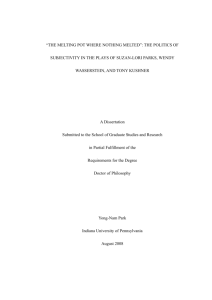The Scarlet Letter, Chapters 1 – 3
advertisement
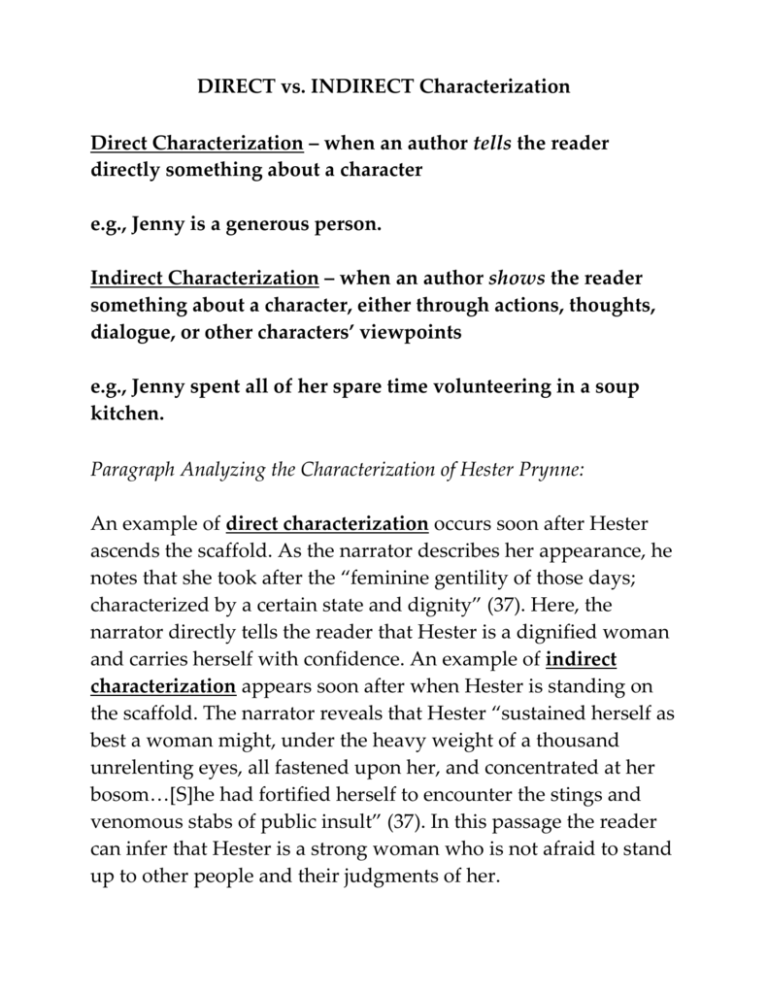
DIRECT vs. INDIRECT Characterization Direct Characterization – when an author tells the reader directly something about a character e.g., Jenny is a generous person. Indirect Characterization – when an author shows the reader something about a character, either through actions, thoughts, dialogue, or other characters’ viewpoints e.g., Jenny spent all of her spare time volunteering in a soup kitchen. Paragraph Analyzing the Characterization of Hester Prynne: An example of direct characterization occurs soon after Hester ascends the scaffold. As the narrator describes her appearance, he notes that she took after the “feminine gentility of those days; characterized by a certain state and dignity” (37). Here, the narrator directly tells the reader that Hester is a dignified woman and carries herself with confidence. An example of indirect characterization appears soon after when Hester is standing on the scaffold. The narrator reveals that Hester “sustained herself as best a woman might, under the heavy weight of a thousand unrelenting eyes, all fastened upon her, and concentrated at her bosom…[S]he had fortified herself to encounter the stings and venomous stabs of public insult” (37). In this passage the reader can infer that Hester is a strong woman who is not afraid to stand up to other people and their judgments of her.
